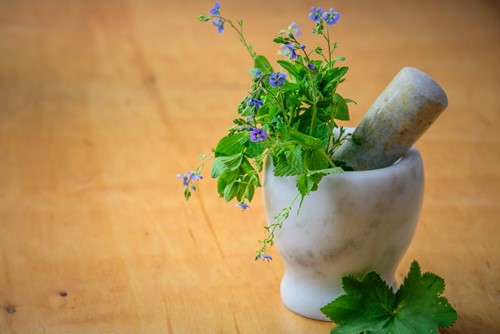
Are you a culinary adventurer? If so, you know how much fun it can be to experiment with herbs in your soups, sauces and casseroles. Better, it’s easy enough to step that flavor up by using fresh herbs picked straight from the garden. Many culinary herbs are easy to grow on a windowsill, and they’re only an arm’s reach away from the kitchen stove. Whether you’re hoping to grow your own fresh thyme, parsley or rosemary, these quick tips will help you produce healthy indoor herbs that add oodles of flavor to your favorite dishes.
Once they’ve sprouted, herbs enjoy the same temperatures that humans prefer. Anywhere from 65 to about 70 degrees is ideal. This means they should be happy enough anywhere in your house except for cool damp basements or garages that aren’t climate controlled. Don’t let them swelter in a too-hot windowsill or stunt them by setting them in direct air conditioning.
Many herbs, such as sage, Greek oregano and thyme, are actually perennial plants when grown outdoors in more temperate zones. This makes them somewhat less finicky and easier to grow indoors than cilantro or dill. If you’re having trouble getting herbs to flourish as houseplants, it could simply be that you’ve planted ones that do better outside. Opt for easy-to-grow herbs like:
Chives.
Tarragon.
Lemon balm.
Curled parsley.
Mint.
While you don’t want them to cook from southern exposure, most herbs do require at least six hours of sunlight daily. If you don’t have a windowsill that fits this description, you can invest in simple grow lights. If you use lights, however, give your plants periods of darkness at night, just as they’d get if you planted them outdoors.
Unfortunately, placing your herbs in a window is not the same as giving them direct access to the sun. The window glass filters the light somewhat, and if you have solar films on your windows, they will filter UV rays even more. A window that faces west is an excellent choice for houseplant placement. These windows receive the full afternoon and evening sun, but the temperature is not as hot as that generated in a south-facing window.
If you’re not sure whether your herbs are getting the optimum amount of sun, look to your plants for the answers. Plants that are getting too much sun will show yellow leaves or brown, burned spots. Too little sun results in a weak, leggy appearance.
Water too much, and your roots will rot. Water too little, and your herbs will wither and die. Both situations are frustrating to the weekend chef. Unfortunately, the water needs of herbs are all over the place, and what works for one may kill the one next to it. For these reasons, read your plant care instructions. And if you’re growing various herbs, try to keep them grouped according to how often they need watered.
By following these three simple guidelines, you can have an indoor herb garden that makes you smile every morning when you step into your kitchen and one that makes your family smile every night at dinner. There’s no mystery to growing herbs indoors successfully. Rather, it’s all in the science. Once you solve the equation, there will be no limits to the tasty herbs you can grow.
